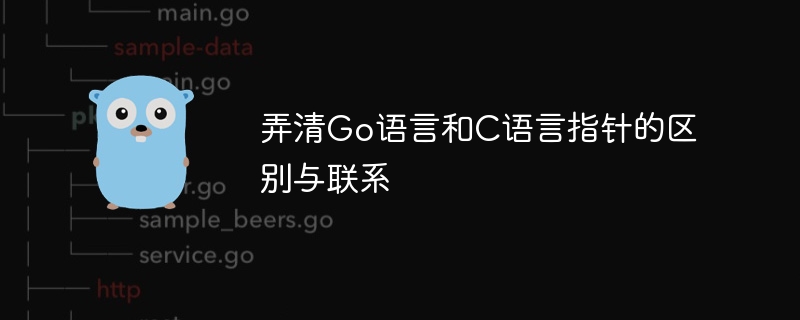

Go language and C language are two popular programming languages. They are similar in many aspects, but there are some obvious differences in the concept and usage of pointers. This article will delve into the differences and connections between Go language and C language pointers, and illustrate them with specific code examples.
First, let’s take a look at the basic concepts and usage of pointers in C language. In C language, a pointer is a special variable that stores a memory address and can be used to access the data stored at that address. Pointers play an important role in the C language and can be used to implement dynamic memory allocation, data structure operations, etc. The following is a simple C language pointer example:
#include <stdio.h>
int main() {
int num = 10;
int* ptr = #
printf("Value of num: %d
", num);
printf("Address of num: %p
", &num);
printf("Value via pointer: %d
", *ptr);
return 0;
} In this example, we define an integer variable num and use the pointer ptr to store # The address of ##num. The value of num can be accessed through *ptr. This example shows the basic usage of pointers in C language.
package main
import "fmt"
func main() {
num := 10
ptr := &num
fmt.Printf("Value of num: %d
", num)
fmt.Printf("Address of num: %p
", &num)
fmt.Printf("Value via pointer: %d
", *ptr)
}num and use the pointer ptr to store # The address of ##num. The value of num can be accessed through *ptr. This example shows the basic usage of pointers in Go language. In summary, there are some differences between Go language and C language in the concept and usage of pointers, mainly in pointer operations and type conversion. But their basic principles are similar, they are all used to store and access the memory addresses of variables. When developers write code, they need to choose the appropriate language and pointer usage according to the specific situation to ensure the correctness and efficiency of the program.
Through this article's discussion of the differences and connections between Go language and C language pointers, I believe readers will have a deeper understanding of the pointer concepts of these two programming languages. I hope the content of this article can provide some help to readers when learning and using these two languages.
The above is the detailed content of Understand the differences and connections between Go language and C language pointers. For more information, please follow other related articles on the PHP Chinese website!




